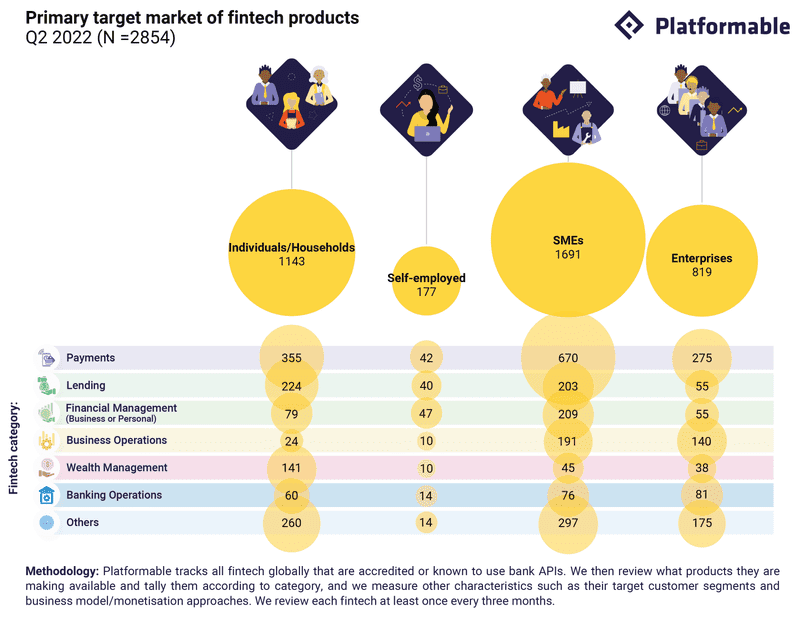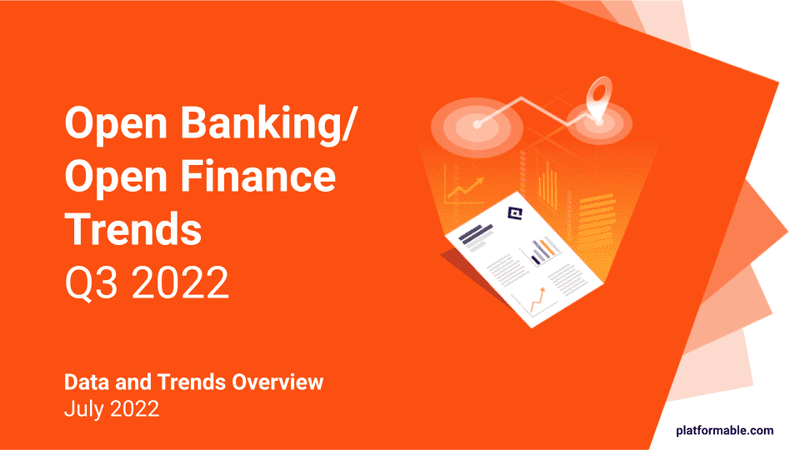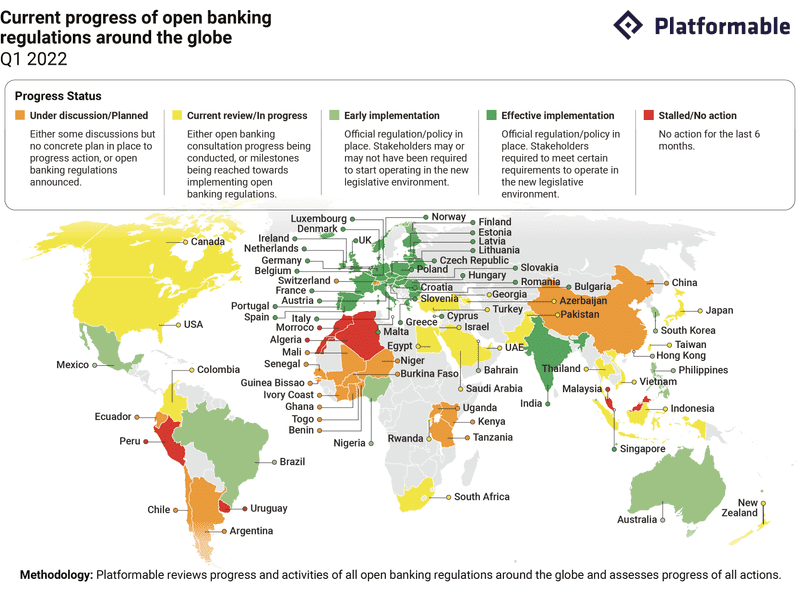Q4 2020 Open Banking API Trends: Fintech
13 min read
Share this article

Fintech around the world
At present, we are tracking the number of fintech that are accredited in various markets to use open banking APIs. In unregulated markets like the US, we look at fintech that are part of industry-led API standards bodies like Financial Data Exchange to measure the level of involvement of fintech in open banking.
Country of origin amongst fintech
The highest number of fintechs (using open banking APIs) originating in any country is the UK with 161 fintechs. 213 are accredited to operate using banking APIs in the country. This reflects UK’s early and quick adoption to open banking regulations as well as innovation since it has grown in a number of fintech product categories such as payments, banking operations, financial management and business operations (see below for a breakdown of fintech by product taxonomy).
Moreover, UK has also seen the most number of collaborations between banks and fintechs to extend their services and generate value. Apart from the partnerships, Bank APIs have been used by fintechs to build new financial services that have given them access to existing bank customers. This helps both banks and fintechs to create new revenue streams. Some examples of such fintechs include UK are Bud Financial, Tail, Ecospend Technologies and Flux Systems which use bank APIs from HSBC, Barclays, Starling Bank, N26, Monzo, Allied Irish Bank, Bank of Scotland, Bank of Ireland, Bank of Cyprus, Dankse Bank and more to build new products.
The fintech providers outside Europe are accredited either by their new fintech regulations in their respective countries or by an industry standard consortium such as Financial Data Exchange (FDX) in case of US and Canada.
Singapore has the highest number of accredited fintechs classified by Monetary Authority Singapore as Major Payment Institutions. Many of the firms accredited in Singapore offer electronic payment services and the market is especially dominated by financial exchange (FX) solutions targeted at small and medium enterprises.
European accredited fintech
By the end of Q4 2020, there were 354 fintech operators accredited in Europe:
- 228 startups (64%) in Europe are accredited to work in only one country.
- 69 (16%) are accredited to operate in 2-20 countries.
- Only 67 fintech providers (19%) are accredited to operate in more than 20 countries across Europe.
In Q4 2020, 20 more fintechs were accredited in Europe under Second Payment Services Directive (PSD2) regulations. Fintech with both account information and payment initiation (that is, AISP and PISP) accreditation increased the highest. Fintechs with only AISP accreditation also increased, however there was no growth amongst fintech seeking only to add payment initiation accreditation.
Fintech Product categories
Reflecting the more ready availability of payment and account information APIs, the majority of fintech products being created with open banking APIs at present are payment or budget management related. The high level of Banking Operations fintech services in Europe is partly due to the emergence of API aggregation services which are needed in an environment where each bank can create their own non-standardised APIs. Therefore, for open banking to mature, there is the need for middleware services that can standardise APIs and offer uniform APIs that are able to integrate each bank's individual API offerings.
At Platformable, we group fintech by major product categories, as well as by sub-service categories, as shown in the figure below.
Global trends in fintech products being created show:
- FX Services (148 providers, 21%)
- Account/API Aggregation services (91 providers, 13%)
- Account-keeping & Budgeting (75 providers, 10%).
The services offered the least were Blockchain/Crypto (3 providers), Insurance (3 providers) and Real Estate (6 providers).
Outside Europe, Mexico accredited 50 fintechs in Q4 2020. Mexico implementation of its ‘fintech law’ (which was introduced in 2019) began, leading to a flurry of fintechs becoming accredited under the new regulations. According to the new Mexican law, they are termed as ‘Financial Technology Institutions’. These fintech firms are beginning to partner with Mexican banks.

For instance Toditocash, a card and wallet management platform, has partnered with Railsbank and 16 other banks in Mexico.
Fintech business models
One of the common goals in most open banking regulations is to enable greater competition. Open banking APIs, then, need to be able to assist third parties to create viable business products for their target markets. This requires a number of factors:
- Banks need to be opening open banking API products that can be used to create innovative products and services
- Open banking regulatory systems and/or voluntary industry-led collaborations must ensure open banking products are sufficiently functional that they enable third parties to build viable products
- Fintech need to have appropriate authority (such as accreditation) to build the products
- Fintech need to be able to set pricing and other business models in place and build a sufficiently large customer base to become viable commercial services.
182 fintechs reported subscription revenue as their primary source of revenue. This was the most common business model among fintech offering accounting and budgeting, digital banking and account/API aggregation services.
Fintechs also rely on traditional revenue models such as commissions, and transactional revenue when they are offering financial services like payment, digital banking or lending services, where they can charge a per-transaction volume pricing fee on top of a transaction. This has become the standard pricing structure for payment services for example, where a payments provider will charge a small flagfall fee for each transaction, such as $0.25 plus a percentage of the total transaction value being processed, such as 1.4% of total transaction volume.
Worryingly, a large number of fintechs (268) have ‘Unknown’ as their revenue model. Some of the may have private deals, for example, they may use bank APIs in a partnership collaboration with a bank, or may have an enterprise deal that is not publicly listed on their pricing pages. But we suspect that the majority of these fintech are currently being funded by venture capitalist or other investors that are supporting the fintech market entrants to first build a customer base ahead of finding a way to then charge customers for the value they receive from the apps and services they have grown accustomed to using. We expect in a post-COVID environment that there will be less runway available for this type of untested business model.
Keep up to date with our open banking quarterly trends reports. Subscribe now for access to a downloadable data deck and for early adopter access to our interactive dashboard and API.





